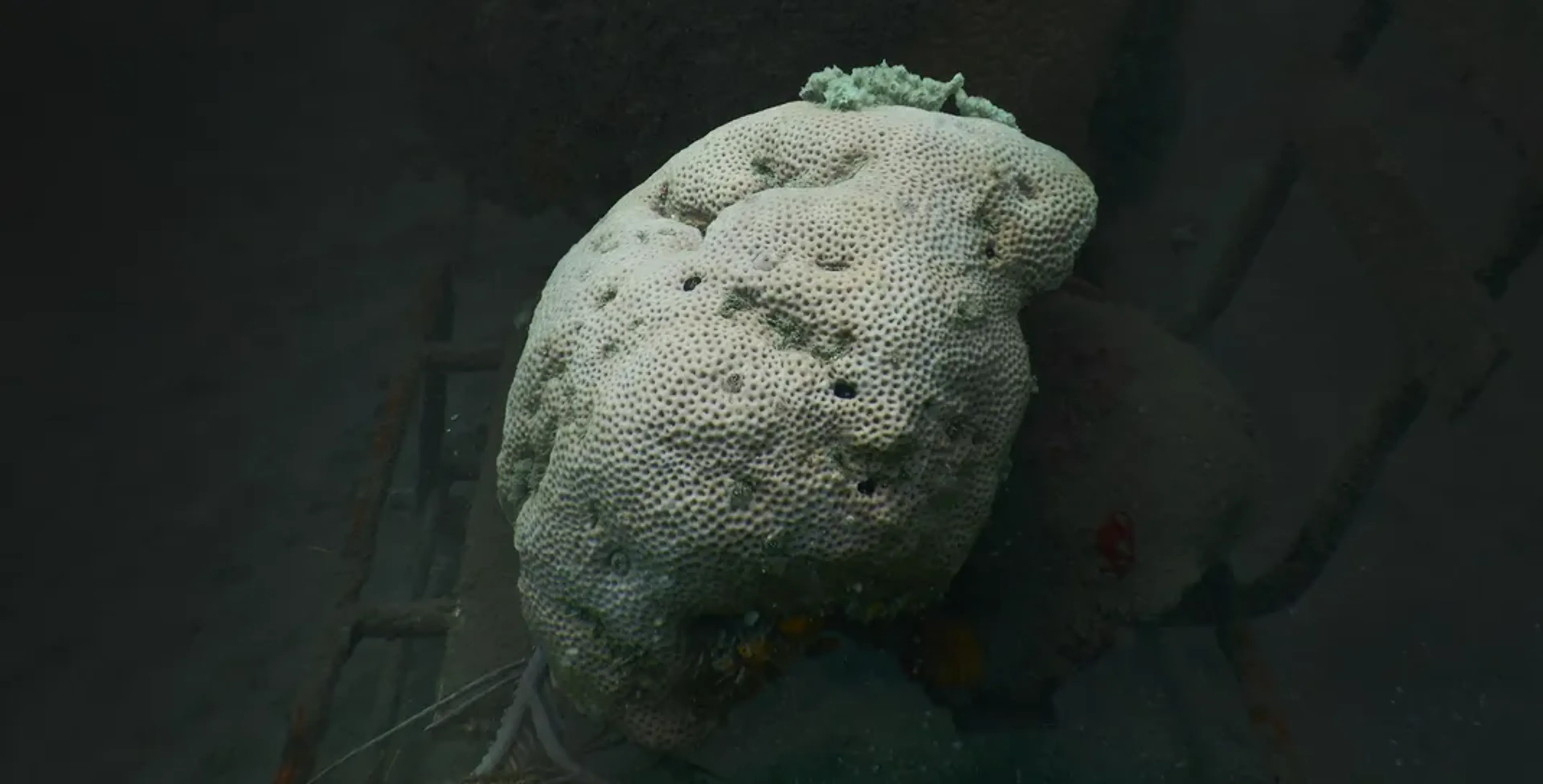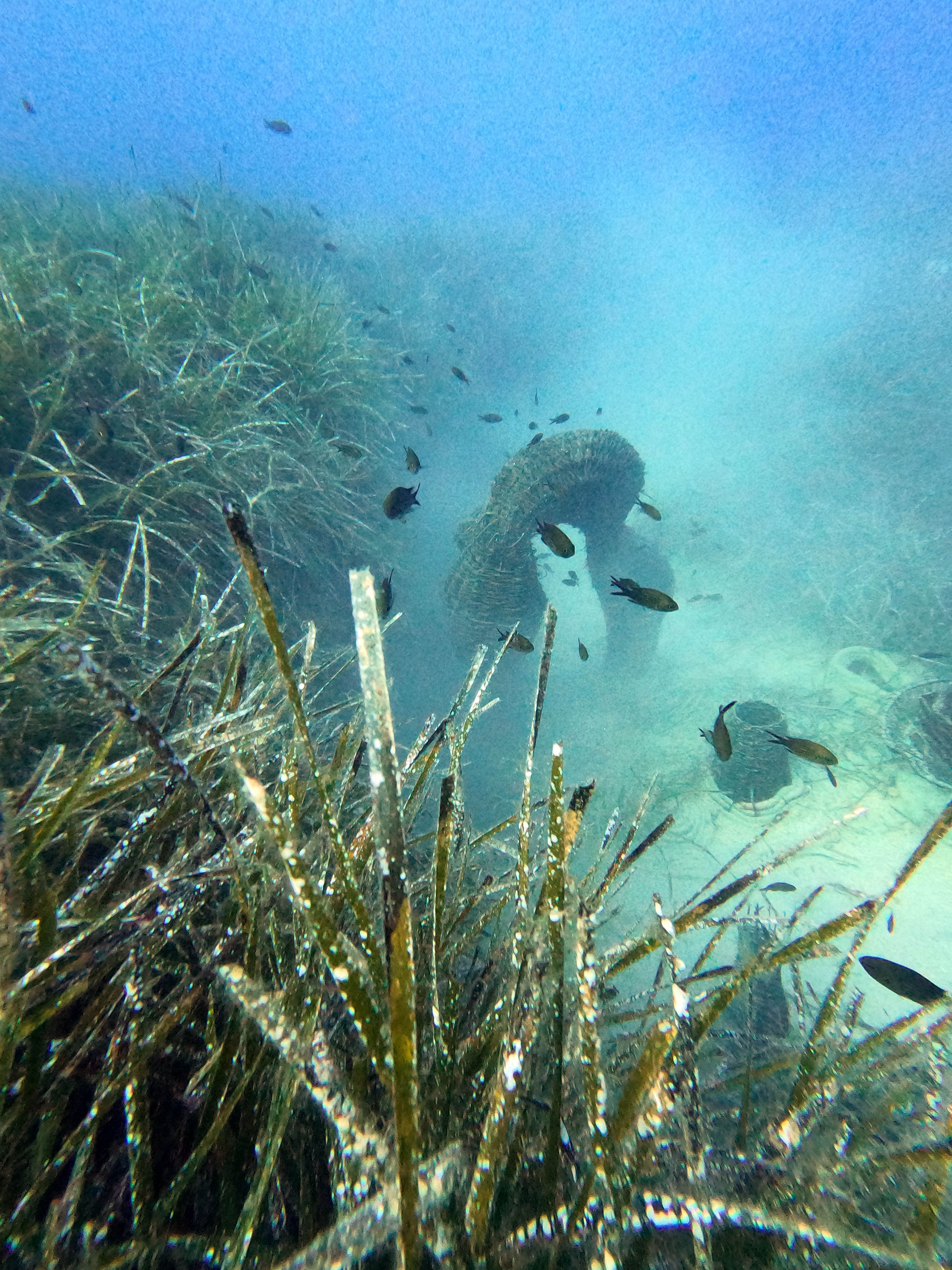
image credits: Siderastrea siderea coral, rasaweber.com, 2023
Reef ecologies have been transformed into ruinous spaces. Continued anthropogenic pressure on coral worlds has led to death and destruction of marine habitats. The effects of the climate crisis appear to be becoming irreversible damage not only to corals, but also to all symbiotically associated species that depend on their thriving, including the human. However, in rare cases, unlikely ecosystems have managed to establish themselves in blasted seascapes (following Tsing and Kirksey's term »blasted landscapes«1), which, as Alexis Shotwell reminds us, »can still be spaces of hope«2. They illustrate neither the fall of an »untouched paradise« nor the irreversible destructiveness of the human species alone: in their resistance to being wiped off the ecological map, despite all the devastating forces to which they were and are still exposed, they could be read as islands of hope in a largely ruinous ocean. This hope, however, is contaminated.

CREDITS: SYNTOPOLIS Prototype, rasaweber.com. Photo: Till Timmermann. Location:STARESO (FR), 2024
The »SymbiOcean« project brings together design, anthropology, and marine biology to develop a new approach to the creation of feral3, unruly, and locally situated marine habitat in collaboration with ocean dwellers, marine communities and their diverse materials, technologies, and cultural approaches. These newly emerging ecosystems, resulting from collaboration across species boundaries, could be called »queer reefs«. They act as a counter to the established norms of conservation policies that traditionally advocate for a return to a »pristine«, »prehuman« or »untouched« ecology. »Queer reefs« seek to contribute to the recently emerging field of queer ecologies4 by specifically addressing conservation practices and policies in marine environments in messy and compromised times. Through methods of ecological attunement5, co-design, and underwater fieldwork through diving, »SymbiOcean« is developing forms of submerged6 practice and thinking that consider convivial conservation7 as a new model for shaping the future of reefs and the intricately interwoven life of marine communities.
This PhD project is funded by the Swiss National Science Fund project »Interfacing the Ocean« led by Prof. Dr. Karmen Franinović and Dr. Roman Kirschner at Zurich University of the Arts, conducted together with PhD researchers Antoine Bertin and Anthea Oestreicher. The doctorate takes place within the practice-based PhD program cooperation between Zurich University of the Arts and University of Arts and Design Linz, supervised by Prof. Dr. Karmen Franinović (Design) and Dr. Karin Harrasser (Cultural Theory, University of Arts and Design Linz). As associated member, Rasa Weber has joined the Cluster of Excellence »Matters of Activity« at Humboldt University of Berlin in 2022 and is part of its PhD research cohort.
All rights reserved @ rasaweber.com.

CREDITS: Bleaching colpophylia natans coral at Blue Apple Bay. rasaweber.com. Photo: Rasa Weber. Location: Tierra Bomba (COL), 2023
1 Anna L. Tsing (2014). »Blasted Landscapes (and the Gentle Arts of Mushroom Picking)«. In: Eben Kirksey (ed.) (2014). »The Multispecies Salon«. Duke University Press.
2 Alexis Shotwell (2016). »Against Purity. Living Ethically in Compromised Times«. University of Minnesota Press, p. 198.
3 Jack Halberstam (2020). »Wild Things: The Disorder of Desire«. Duke University Press.
4 Greta Gaard 1997, Catriona Mortimer-Sandilands & Bruce Erickson 2010, Timothy Morton 2010, Matthew Gandy 2012, Catriona Sandilands 2016.
5 Vinciane Despret 2008, Lisbeth Lipari 2014, Russell J. Duvernoy 2020, Karmen Franinović & Roman Kirschner 2021.
6 Macarena Gómez-Barris (2017). »The Extractive Zone: Social Ecologies and Decolonial Perspectives«. Duke University Press.
7 Bram Büscher & Robert Fletcher (2019). Towards Convivial Conservation. In: Conservation & Society, Vol. 17, No. 3, p. 283-296.

CREDITS: KIKI prototype. rasaweber.com. Photo: Noemie Chabrier. Location: STARESO (FR), 2024